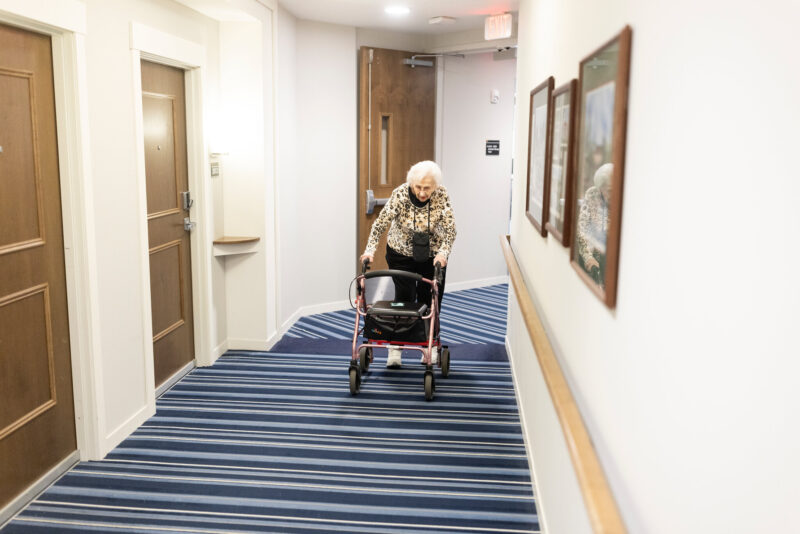This blog post explores the critical decision of transitioning from independent to assisted living for seniors and their families. Understanding when to make this move is crucial for ensuring the well-being and happiness of our elderly loved ones. Assisted living offers a blend of independence and support, but recognizing the right time for this change is not always straightforward. This guide aims to provide clarity and support for those facing this significant life decision.
Signs It May Be Time

Common signs indicating the need for assisted living include difficulties with daily tasks, safety concerns, and declining health. When seniors struggle with activities like cooking, cleaning, or personal care, it’s a clear indicator. Safety concerns, such as frequent falls or forgetting to turn off appliances, are serious red flags. Additionally, worsening health conditions that require regular medical attention suggest the need for a more supportive living environment. Recognizing these signs early can lead to a smoother transition.
Assessing Individual Needs
Assessing a senior’s specific needs and preferences is a critical step in transitioning to assisted living. Family members, alongside healthcare professionals, play a significant role in evaluating the senior’s medical requirements, lifestyle preferences, and social needs. This assessment should consider the senior’s ability to manage daily activities, medication needs, mobility issues, and any cognitive challenges. It’s also essential to understand their personal interests and social habits to ensure the facility provides appropriate engagement and interaction opportunities. This personalized approach ensures that the chosen assisted living facility aligns well with their individual requirements, ultimately helping to maintain and potentially enhance their quality of life. To better assess your senior housing needs you could seek additional info here.
Benefits of Assisted Living
Assisted living offers numerous advantages, including a safer environment, ready access to medical care, and assistance with daily tasks. Such facilities provide personalized care plans, ensuring that each resident’s unique health and wellness needs are met. Additionally, these communities offer social opportunities, crucial in helping seniors avoid the loneliness and isolation often associated with aging. Residents can engage in various social activities, group exercises, and community events, fostering a sense of belonging and community. This balance of independence and support enhances the overall well-being and life satisfaction of the residents, allowing them to thrive in a nurturing environment.
Types of Assisted Living Facilities

There are various types of assisted living facilities, each catering to different needs. Standard assisted living facilities are ideal for seniors who require some level of assistance but maintain a good degree of independence. Memory care units are specialized for dementia patients, offering structured environments and specialized staff. Continuing care retirement communities provide a comprehensive range of care, from independent living to more intensive medical and personal care. Understanding these options is crucial for families to ensure their loved one is in an environment that best suits their current and future needs, providing peace of mind that their loved one is receiving the appropriate level of care and support.
Cost Considerations
The financial aspect of assisted living is a significant consideration. Costs can vary based on factors like location, facility type, and required level of care. Understanding these expenses is crucial, as is exploring insurance coverage options and investigating available financial assistance, such as veteran benefits or Medicaid, where applicable. It’s also important to consider the potential for cost increases over time and plan accordingly. Early financial planning can help alleviate stress and ensure families make a well-informed decision that aligns with their financial capabilities and ensures the best care for their loved one.
Family Discussions
Involving the entire family in the decision-making process is essential. These discussions should address the practical aspects of the move and the emotional impact on both the senior and family members. It’s important to consider the senior’s wishes and feelings, and to communicate openly about the implications of this transition. Addressing concerns, expectations, and the logistics of the move can help in building a consensus. Encouraging open, empathetic communication aids in understanding each other’s perspectives, ensuring that the final decision benefits the senior and respects their dignity and autonomy.
Touring Facilities

Touring potential assisted living facilities is a critical step in the decision-making process. Families should schedule visits to several options, ask thorough questions about care plans, staff qualifications, and emergency procedures. It’s important to assess the cleanliness, safety features, and overall environment. Observing the interactions between staff and residents, and between residents themselves, offers insights into the community’s atmosphere and quality of life. Additionally, evaluating the range of activities and amenities available can help gauge whether the facility meets the senior’s social and recreational preferences, ensuring a good fit for their lifestyle.
Legal and Financial Planning
Before making the move to assisted living, legal and financial preparations are necessary. This includes addressing topics like power of attorney, which allows a designated person to make decisions on the senior’s behalf, and estate planning to manage assets and legacies. Reviewing or updating wills and considering long-term care insurance are also crucial steps. These legal and financial arrangements ensure the senior’s affairs are in order, providing peace of mind for both the senior and their family. Additionally, understanding the resident rights within assisted living facilities can empower seniors and their families in decision-making and ensure their needs are met.
Making the Transition
Making the transition to assisted living smooth is crucial for the senior’s emotional well-being. It involves thoughtful packing, prioritizing items that hold sentimental value or contribute to a sense of familiarity. Involving the senior in decisions about what to bring can give them a sense of control and ease anxiety. Gradually introducing them to the new environment, perhaps through multiple visits before moving, can also be helpful. Saying goodbye to the old home should be done with sensitivity, and settling into the new one with care and attention to creating a comfortable, familiar space.
Support and Adjustments

After the move, ongoing support and adjustments are key to a successful transition. Regular family visits and consistent communication can greatly assist in this adjustment period. Engaging with staff to stay informed about the senior’s well-being and participating in community activities alongside them can be beneficial. Encouraging the senior to participate in community activities helps in adapting to the new environment and building relationships with other residents. It’s also important to be responsive to their feedback and concerns, as their needs and preferences may evolve over time.
Conclusion
This guide highlights the importance of timely and thoughtful decisions regarding assisted living for seniors. Recognizing the right time, assessing needs, understanding options, and preparing emotionally and financially are all part of this significant life transition. With careful planning and support, moving to assisted living can be a positive step towards ensuring a safe, comfortable, and fulfilling life for our senior loved ones.
Related Posts:
- Is Colorado School of Mines Football Good? - In…
- South African Retirement Living: How Many Retirement…
- What to Look for in a Relationship: A Comprehensive…
- Caring for a Horse's Hooves: Pro Tips for Optimal…
- Minya Konka Trekking Guide 2024: 5 Tips for Your…
- Peloton Yoga Basics and Crucial Tips for New Yoga…













